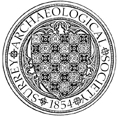‘The Ramparts’, St George’s Hill
Evaluation by G Hayman of SCAU for Mrs E Bickley, of a site proposed for residential development immediately south of the ramparts of the hillfort. An undisturbed soil profile was recorded, but no features or finds of archaeological interest


